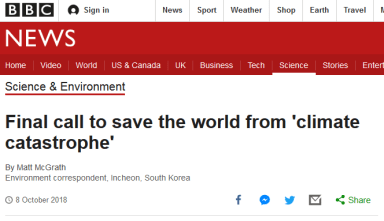 The USA is now a net exporter of crude oil, with crude oil exports exceeding imports. This oil boom is beneficial to 49 states, but not to California.
The USA is now a net exporter of crude oil, with crude oil exports exceeding imports. This oil boom is beneficial to 49 states, but not to California.
The American shale boom has important security implications as well, as America is now less dependent on crude oil from the turbulent Middle East, again, except for California.
Even more impressive is the fact that the U.S. has now overtaken Saudi Arabia in recoverable oil reserves.
California, however, is an “energy island” to its almost 40 million citizens, bordered between the Pacific Ocean and the Sierra Nevada Mountains.
The State has no pipelines over those mountains to access the oil shale boom, thus any crude oil needs from the rest of the country for California must go through the Panama Canal to reach California ports.
There are other options of crude oil by trucks or by railroads, but both have been overwhelmingly ruled out environmentally.
This energy subject is about finding a workable, sustainable balance across equally important concerns for our economy, our shared sense of social equality, our impact on the environment, and a truly sustainable energy future.
The state’s daily need to support its 145 airports (inclusive of 33 military, 10 major, and more than 100 general aviation) is 13 million gallons a day of aviation fuels.
In addition, for the 35 million registered vehicles of which 90 percent are NOT EV’s are consuming DAILY: 10 million gallons a day of diesel and 42 million gallons a day of gasoline.
Additionally, the crude oil is needed in California to support the other “stuff” of chemicals and by-products from crude oil that is the basis of 6,000 products from petroleum that are part of every infrastructure and virtually everything in our daily and leisurely lifestyles.
With both California’s in-state production and imports from Alaska on a steady decline, California now relies on nine major foreign countries for the majority of its crude oil.
Shockingly, California increased crude oil imports from foreign countries from 5% in 1992 to 56% in 2017.
Many in California are working hard to produce hydrocarbon energy efficiently, reliably, and safely, and many others are working hard to develop alternative energy sources that will efficiently, reliably, and safely produce carbon-neutral energy.
But despite those appreciative efforts, our energy needs continue to grow with the growing populations of people, vehicles, and businesses.
The latest data from the California Energy Commission (CEC), shows that California fuel consumption is at the highest level since 2009, this continuation of the state’s dependency on foreign countries for the states’ energy needs seems to be the state’s future.
In 2017, California imported crude oil from foreign countries at the rate of 354,119,000 barrels annually.
The price that refiners are paying in California for that oil is the Brent Average Crude Oil Spot Price that was recently at $75.36 per barrel for September 2018.
Importing more than 354 million barrels of crude oil from foreign countries is costing California more than$26.6 billion annually at the current Brent spot price for oil.
On a DAILY basis, importing more than 354 million barrels of crude oil annually costs California more than $73,000,000 per day.
Those California dollars are being “EXPORTED” on a daily basis from California to Saudi Arabia, Ecuador, Columbia, Iraq, Kuwait, Brazil, and Mexico and others.
The volume of imported crude oil for 2018 is expected to be higher than 2017 because of the constant decline in California crude oil production, and the constant decline in imports from Alaska, thus, both the imported numbers of barrels from foreign countries and costs are increasing to fill the void.
The 1,700 square-mile Monterey Shale, from the state’s central coast to its San Joaquin Valley, holds roughly 60 percent of the country’s estimated shale oil reserves.
Yet, even though California is sitting on one of the largest shale reserves and ocean crude oil reserves in the country in the Monterrey Shale and the Pacific Ocean, California’s reliance on crude oil imports from foreign countries is at 56% and increasing each year.
In lieu of sending that money abroad to countries that are already oil-rich, that money could have stayed in the state to be earned by hard-working, tax-paying Californians by accessing the huge reserves in-state.
Rather than obtaining oil from foreign countries with less stringent environmental regulations than California, via air polluting ships delivering the crude oil, the State could be contributing to lessening world GHG emissions by increasing in-state production from the most environmentally regulated location in the world, from one of the largest crude oil reserves in the country.
Oil from in-state reserves could provide Californians with affordable and reliable energy, and jobs, but California seems to be on a continuous path of importing crude oil from foreign countries and sending more than $73,000,000 of its dollars to oil-rich nations on a DAILY basis.
Read more at CFACT

















Well, you can’t fix stupid. And the politicians and the “elite” of California are a special kind of stupid. One that costs the middle and lower classes much higher costs in gasoline and everything else they need.